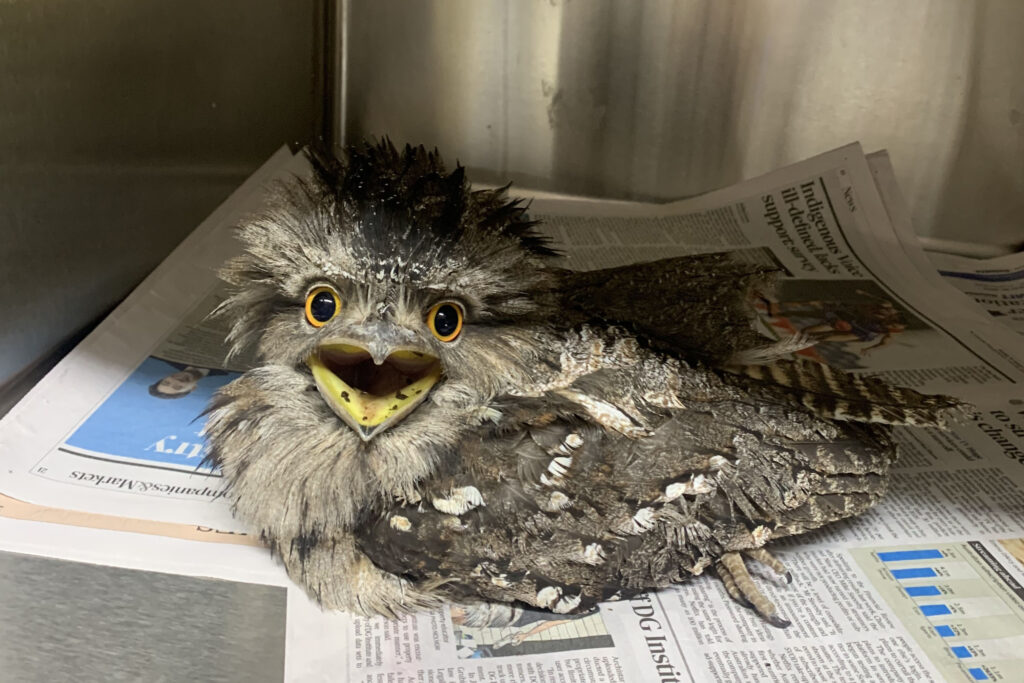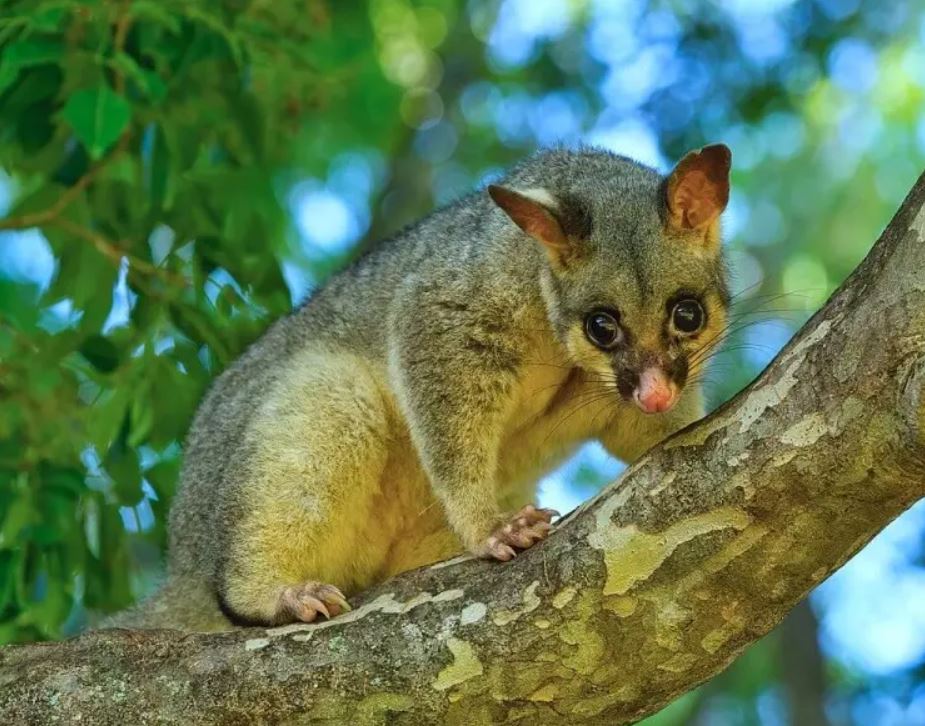

We received a juvenile tawny frogmouth into Cronulla Veterinary Clinic this week. He was sitting on the ground, at risk of being attacked by dogs or cats, and a concerned member of the public brought him in. He has neurological deficits, and we suspect the rat lungworm larval disease – the prognosis isn’t encouraging. Still, he has been collected by WIRES, and a carer will complete his course of injections, so we remain optimistic.
This emotional case highlights the need for pet owners and wildlife carers to take precautions to minimise the transmission of the disease to the animals in their care.
What is Rat Lungworm?
Rat lungworm, or Angiostrongylus cantonensis, is the most common cause of neurological disease in tawny frogmouths (Podargus strigoides) in the Sydney region and is an emerging disease in brushtail possums (Trichosurus vulpecula). A study* examining the role of wildlife species as sentinels for rat lungworm suggests an expanded distribution of the parasite, as historical surveys conducted and published in Sydney back in 1993 and 1995 showed no evidence of the parasite in either species.
Rat lungworm is known to cause neurological disease in various species, including dogs, wallabies, foxes and birds. It is the most common cause of eosinophilic meningitis in humans. Adult worms live in the pulmonary arteries and right ventricle of rats. Larvae are shed in rat faeces, which are ingested by intermediate hosts, usually slugs and snails. They moult twice inside these intermediate hosts to the 3rd larval stage and are, as such, infectious to rats and other hosts.
Once swallowed, the larvae cross the host’s intestinal wall, spreading via the bloodstream and lymphatic system to the brain and spinal cord. Their movement, and the swelling it produces, cause neurological signs (and marked pain in humans).
Sydney University veterinary pathologist and study co-author Derek Spielman explains that rat lungworm originated in south-eastern China and has been expanding worldwide since World War II. It developed in semi-tropical environments and first gained its Australian foothold in south-eastern Queensland. Climate change may well be aiding the increase of this parasite. Rat lungworm doesn’t require exotic mollusc species, so it’s been able to infect a wide range of locally found intermediate hosts.
What Are The Symptoms?
As seen in our young frogmouth, key clinical signs of rat lungworm include severe muscle weakness or paralysis of the legs, followed by progressive weakness of the wings and subdued mental processes. Frogmouths rescued early in the disease aren’t able to land or stand and can be picked up easily. The limb weakness in brushtail possums isn’t quite as easy to pinpoint, as these little guys are prone to a number of other conditions that may cause similar symptoms, like “wobbly possum syndrome”.


How is it Prevented?
So, what implications do the survey findings have for pet owners and wildlife carers?
Fruit and veggies from gardens should be washed thoroughly before eating. This is vital with back gardens and organically grown produce, where snail bait is not used.
About two children per year in Sydney are affected by rat lungworm, so parents need to be mindful of the possibility of young kids eating snails, slugs or frogs, or even sampling pet food from bowls left outside and exposed to slug and snail activity. Rat lungworm infection may result in significant brain damage and can prove fatal.
Dog and cat food bowls should not be left out where they can be exposed to snails or slugs. Puppies are commonly infected when they eat slugs or snails from pet bowls left outside.
Wildlife carers must be careful not to feed contaminated fruit or vegetables to possums or any other animal in care. This means washing all produce thoroughly and not leaving food in bowls outside overnight when snails and slugs are active. This may present a challenge, as many wildlife species are nocturnal feeders, but removing the food bowls before you go to sleep will give them time to eat before the food is cleared away.
How Is It Treated?
While symptomatic treatment is usually successful in people and dogs if the disease is picked up early, the prognosis for affected wildlife species isn’t good, as wildlife is often not brought in and diagnosed before permanent neurological damage has occurred. Additionally, if they don’t die, they will not be functional enough to survive in the wild, so euthanasia is often the only alternative.
Controlling the definitive hosts (the introduced black rat, Rattus rattus, and the Norway rat, Rattus norwegicus) reduces the prevalence and risks of rat lungworm infection.
The research team plans to expand their study and will call on vets and public members to submit snails and slugs to determine whether the parasite is present.
We do hope our young tawny has youth and strength on his side and that the intervention by a caring group of humans on his behalf has given him the kickstart needed to guide him to a full recovery.
Source article, with thanks to The Veterinarian – ‘Wildlife sentinels reveal expanding distribution of rat lungworm’, February 25, 2013, Anne Fawcett.
*Reference – Ma G, Dennis M, Rose K, Spratt D and Spielman D (2013) Tawny frogmouths and brushtail possums as sentinels for Angiostrongylus cantonensis, the rat lungworm. Veterinary Parasitology 192:158-165.
